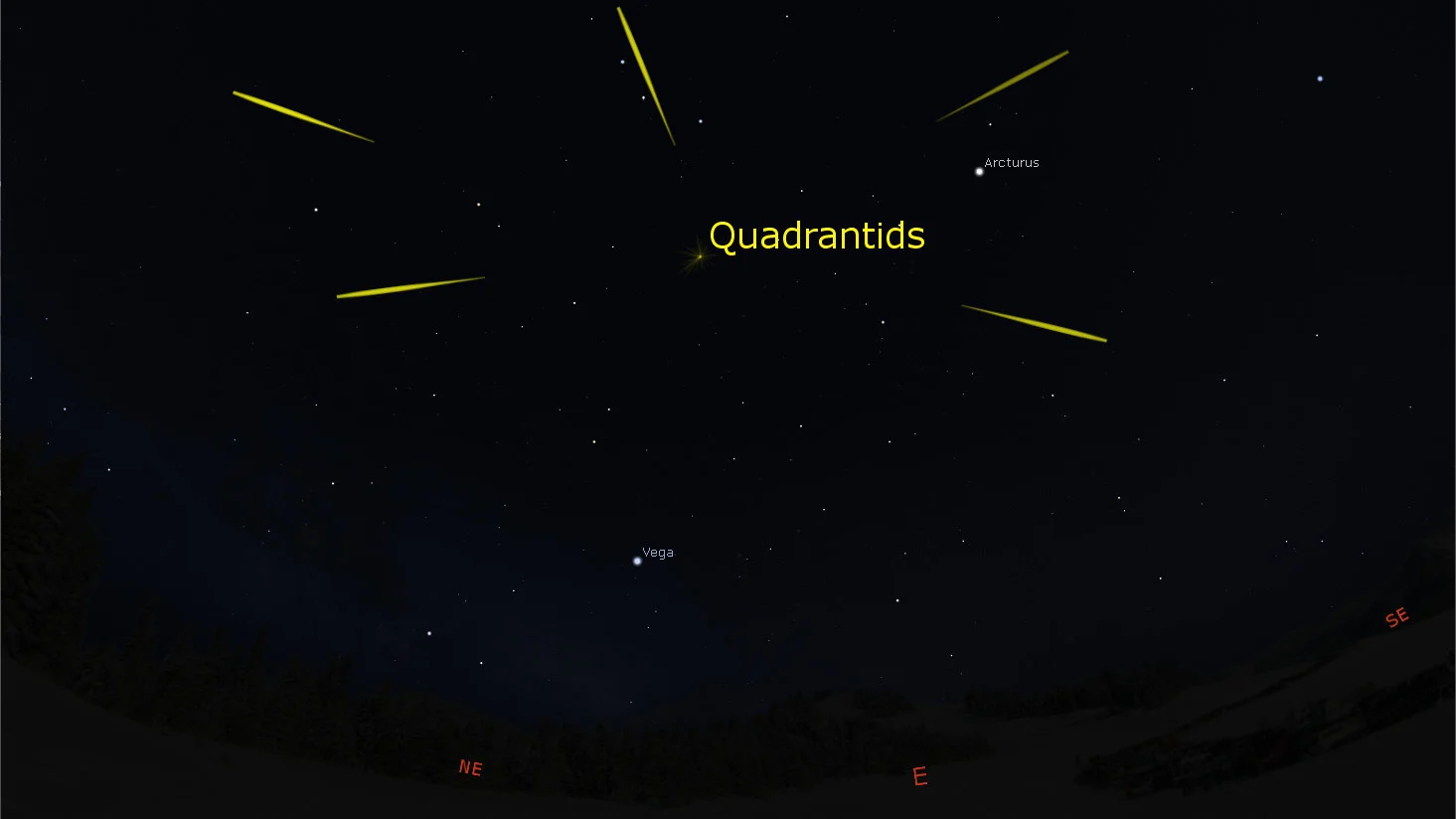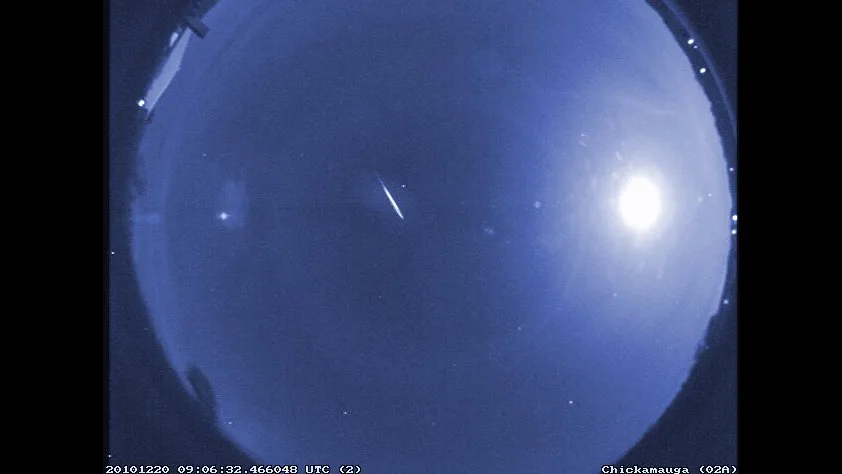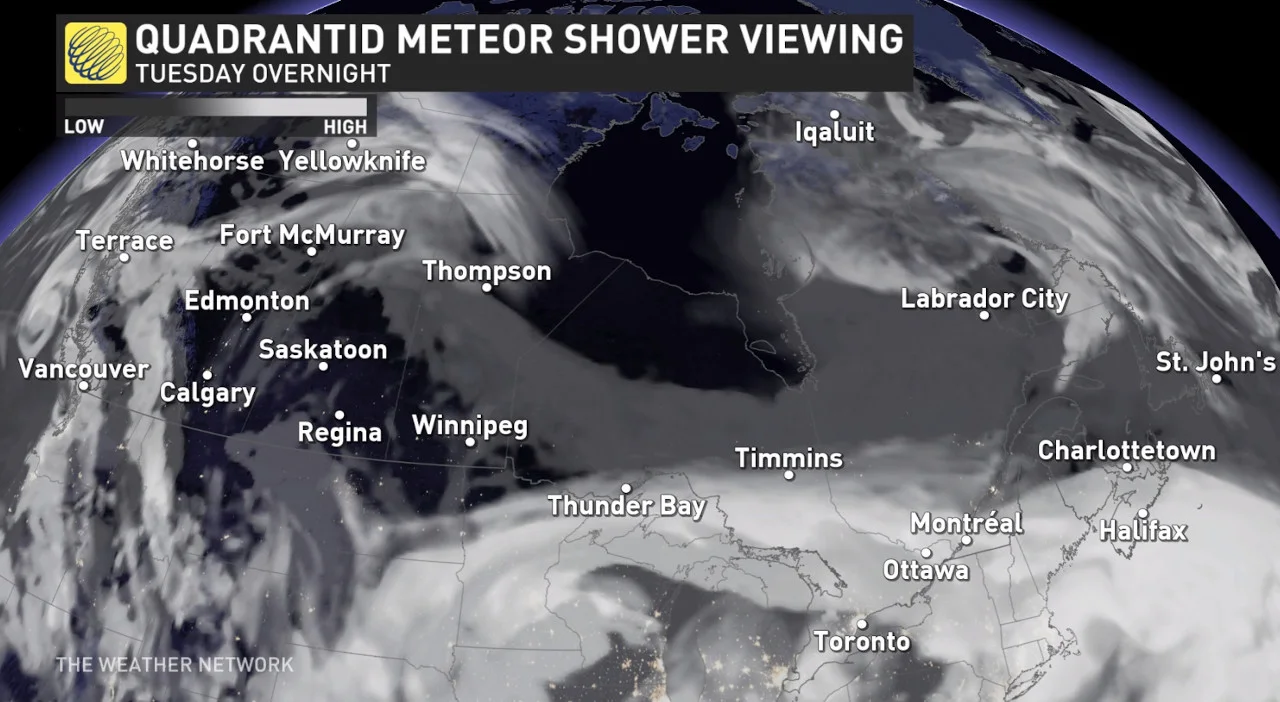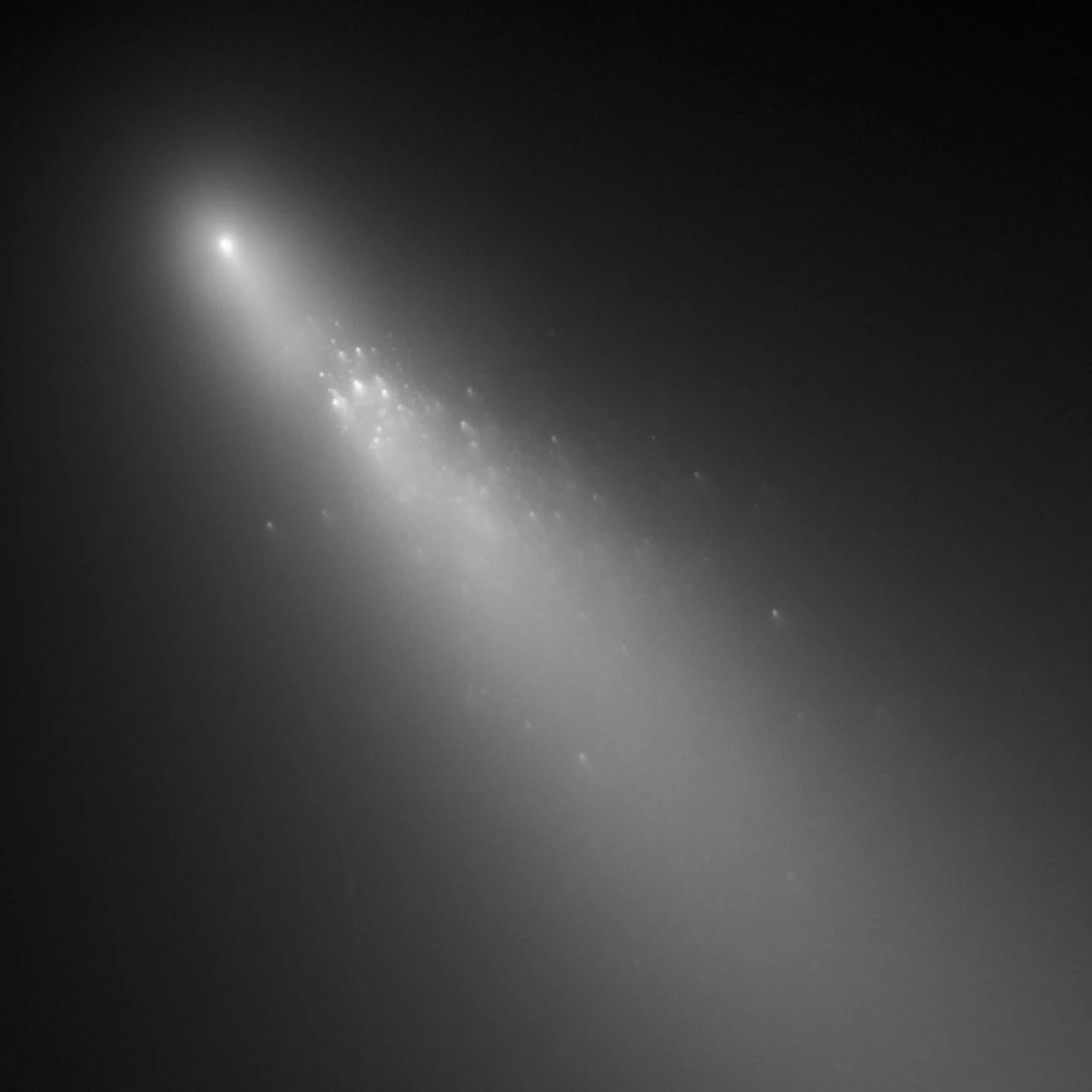
How to watch tonight's Quadrantid meteor shower from anywhere
The first meteor shower of the year (and one of the best) peaks tonight!
Are clear skies in your forecast tonight? If so, look up! You could catch a spectacular show from the Quadrantid meteor shower!
As Earth nears the closest point to the Sun in its orbit for the year (perihelion), the planet is passing through a stream of rocky, dusty debris left behind by what is likely the remains of an extinct or shattered comet.
When these bits of rock and dust — collectively known as meteoroids — are swept up by Earth, they plunge into the atmosphere travelling at speeds of over 40 kilometres per second! At that speed, they compress the air in their paths with such force that it glows white-hot. This results in the streaks of light through the night sky we call meteors, and since these meteors are all from the same source, it is known as a meteor shower.

The position of the Quadrantids 'radiant' in the northern sky on Jan. 3-4, 2023. Credit: Stellarium/Scott Sutherland
For this particular meteor shower, the Quadrantids, the streaks of light appear to radiate from a point in the sky near a defunct constellation known as Quadrans Muralis. Although the constellation is no longer used, it still lends its name to the meteor shower.
The Quadrantids are active from December 28 to January 12 each year. When the shower reaches its peak on the night of January 3-4, it can produce up to 120 meteors per hour under ideal conditions. Along with the Perseids and the Geminids, it is one of the strongest meteor showers of the year!

This false-colour image of a rare early Quadrantid was captured by a NASA meteor camera in 2010. Credit: NASA/Meteoroid Environment Office/Bill Cooke
Given that some meteors are too fast or faint to catch with the human eye, most observers tend to see about half that number. Still, catching a meteor every minute is excellent!
One complication that will make viewing the Quadrantids a challenge this year is the Moon.
With the Full Wolf Moon only three nights away, on January 6, tonight's Waxing Gibbous Moon will cast enough light into the sky that the fainter meteors will likely be washed out. Fortunately, with the Quadrantids radiant in the northern sky, we can turn our backs on the Moon to the south to keep it out of our line of sight.
Read on for tips on maximizing your potential for this event!
Will we see it?
A clear sky view is essential for watching a meteor shower.
Here are the cloud conditions across Canada overnight tonight.

Unfortunately, a storm system is spreading thick cloud across the eastern half of the country. The best regions of the country for viewing the meteor shower appear to be across the Prairies.
How to watch from anywhere
Don't despair if you are caught under cloudy skies tonight! There are other ways to watch this meteor shower right from the comfort of your home.
There is a 27/7 live stream from the Subaru-Asahi Star Camera, located at the Subaru Telescope atop Mauna Kea in Hawai'i, which will feature views of the Quadrantid meteor shower tonight. While the stream is ongoing, sunset is at 5:56 p.m. Hawaii Standard Time, which equates to 10:56 p.m. EST.
The Virtual Telescope Project is hosting a live stream of the meteor shower, starting at 3 UTC (10 p.m. EST).
One of the more interesting ways to 'watch' the Quadrantids is by listening to it. The Meteor Echoes live stream presents the radar detections of meteoroids hitting the top of the atmosphere as high-pitched audio chirps.
Extinct or Shattered Comet?
Most meteor showers are produced by debris from icy comets. However, the Quadrantids are one of only three known meteor showers to originate from a rocky asteroid!
The source of the Quadrantids is likely an asteroid known as 2003 EH1. This is based on the similarity of the asteroid's orbit to the shape of the debris stream that produces the meteor shower. Another is the Northern Taurid meteor shower, in October and November, which is produced by asteroid 2004 TG10. For the third, the December Geminids originate from 'rock comet' 3200 Phaethon.
In all these cases, astronomers speculate that these rocky bodies were all once part of a larger cometary body.

*This image of the breakup of Comet 73P/Schwassmann-Wachmann 3 was captured by the Hubble Space Telescope on April 20, 2006. Credit: NASA, ESA, H. Weaver (APL/JHU), M. Mutchler and Z. Levay (STScI)
For example, 2004 TG10 may be a piece of comet 2P/Encke, which is, itself, the source of the Southern Taurid meteor shower. 3200 Phaethon is thought to be an extinct comet — one that has lost all of its ice after repeated close passes around the Sun, leaving behind just the rocky core. For 2003 EH1, it's looking like it could be an extinct comet, like 3200 Phaethon. Still, it seems astronomers haven't ruled out the possibility they may someday find a comet associated with it.
Related: Here are the best space stories 2022
Tips for meteor shower watching
Meteor showers are events that nearly everyone can watch. No special equipment is required. In fact, binoculars and telescopes make it harder to see meteor showers, by restricting your field of view. However, there are a few things to keep in mind so you don't miss out on these amazing events.
The three best practices for observing the night sky are:
Check the weather,
Get away from light pollution, and
Be patient.
Clear skies are essential. Even a few hours of cloudy skies can ruin your chances of watching an event such as a meteor shower. So, be sure to check The Weather Network on TV, on our website, or from our app, and look for my articles on our Space News page, just to be sure that you have the most up-to-date sky forecast.
Next, you need to get away from city light pollution. If you look up into the sky from home, what do you see? The Moon, a planet or two, perhaps a few bright stars such as Vega, Betelgeuse and Procyon, as well as some passing airliners? If so, there's too much light pollution in your area to get the most out of a meteor shower. You might catch an exceptionally bright fireball if one happens to fly past overhead, but that's likely all you'll see. So, to get the most out of your stargazing and meteor watching, get out of the city. The farther away you can get, the better.
Watch: What light pollution is doing to city views of the Milky Way
For most regions of Canada, getting out from under light pollution is simply a matter of driving outside of your city, town or village until a multitude of stars is visible above your head.
In some areas, especially in southern Ontario and along the St. Lawrence River, the concentration of light pollution is too high. Getting far enough outside of one city to escape its light pollution tends to put you under the light pollution dome of the next city over. The best options for getting away from light depend on your location. In southwestern Ontario and the Niagara Peninsula, the shores of Lake Erie can offer some excellent views. In the GTA and farther east, drive north and seek out the various Ontario provincial parks or Quebec provincial parks. Even if you're confined to the parking lot after hours, these are usually excellent locations from which to watch (and you don't run the risk of trespassing on someone's property).
If you can't get away, the suburbs can offer at least a slightly better view of the night sky. Here, the key is to limit the amount of direct light in your field of view. Dark backyards, sheltered from street lights by surrounding houses and trees, are your best haven. The video above provides a good example of viewing based on the concentration of light pollution in the sky. Also, check for dark sky preserves in your area.
When viewing a meteor shower, be mindful of the phase of the Moon. Meteor showers are typically at their best when viewed during the New Moon or Crescent Moon. However, a Gibbous or Full Moon can be bright enough to wash out all but the brightest meteors. Since we can't get away from the Moon, the best option is just to time your outing right, so the Moon has already set or is low in the sky. Also, you can angle your field of view to keep the Moon out of your direct line of sight. This will reduce its impact on your night vision and allow you to spot more meteors.
Once you've verified you have clear skies and you've limited your exposure to light pollution, this is where being patient comes in.
For best viewing, your eyes need some time to adapt to the dark. Give yourself at least 20 minutes, but 30-45 minutes is best for your eyes to adjust from being exposed to bright light.
Note that this, likely more than anything else, is the one thing that causes the most disappointment when it comes to watching a meteor shower.
If you step out into your backyard from a brightly lit home and looking up for a few minutes, you might be lucky enough to catch a rare bright fireball meteor. However, it's far more likely that you won't see anything at all. Meteors may be streaking overhead, but it takes time for our eyes to adjust, so that we can actually pick out those brief flashes of light. Waiting for at least twenty minutes, while avoiding sources of light during that time (streetlights, car headlights and interior lights, and smartphone and tablet screens) dramatically improves your chances of avoiding disappointment.
Sometimes, avoiding your smartphone or tablet isn't an option. In this case, set the display to reduce the amount of blue light it gives off and reduce the screen's brightness. That way, it will have less of an impact on your night vision.
You can certainly gaze into the starry sky while you are letting your eyes adjust. You may even see a few of the brighter meteors as your eyes become accustomed to the dark.
Once you're all set, just look straight up and enjoy the view!
(Thumbnail image courtesy Bill Cooke/NASA's Meteoroid Environments Office)






